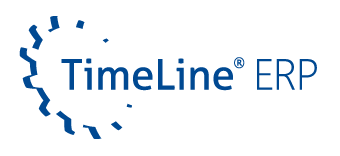ERP project management tasks: a roadmap for new managers
Experience shows that an experienced employee takes over the management of an Enterprise Resource Planning (ERP) project. This has a number of advantages. They have good technical knowledge and are very familiar with the internal processes of the department – and with the tasks of a project manager. They can also assess their colleagues and make valuable recommendations about the composition of the project team. But as is often the case, where there is light, there is shadow. When it comes to project management, leadership is clearly at the forefront. In many companies, it has become an everyday occurrence: an employee is suddenly expected to lead a team and take responsibility for a complex ERP project – even though he or she is not normally exposed to project management tasks. What is not considered: The demands placed on a project manager are not the same as those placed on, say, a technical employee.
This is naturally a difficult situation where role conflicts are inevitable. The problem arises when the individual’s skills do not match the role profile of a typical manager – or when there is simply a lack of professional experience. Of course, there is nothing wrong with taking on new challenges. However, this confrontation often results in excessive demands, which can easily lead to poor decisions and conflicts. Especially in an ERP project, where a lot of time and other resources are invested, this is of course counterproductive. This article summarizes some useful tips to help you get started as a newcomer to project management.
Before the project starts – a structured approach to new tasks
But before you change your mind – with good preparation and a good team, you can look forward to your tasks as a project manager with confidence. The first important things you can do before the project starts. There are basically three areas that will influence your success as a project manager without a direct line manager function.
- The factual, organizational management level
- The human, personal level of your colleagues
- Your own understanding of your role
The management level
The implementation of an ERP project is always a temporary double burden for the individual team members. Everyone should be aware of this if they want to be involved in the project implementation. Nevertheless, the temporary extra work is often the source of conflict. The reason is easy to find.
An example
Let’s say you didn’t sit down with your key user’s manager to discuss the project before it started – simply because you didn’t know it was important. The project begins, and you as the project manager and the manager continue to demand the employee’s attention. You delegate tasks to them, they continue to report to their regular manager, and they still have to manage the normal day-to-day business. Your key user is finding it increasingly difficult to juggle the project and day-to-day responsibilities. He now has two options: Either he communicates in time that he is overwhelmed and needs help, or he allows the situation to continue as before. Either one side falls by the wayside completely, or both sides are dealt with half-heartedly. In the end, it is the key users who have to deal with the backlash from the department and their project partners – as well as a lot of overtime. The result is usually overworked, frustrated project members who are not likely to be available in the future.
Involve your key users’ managers
Fortunately, this is a situation you can easily avoid. As is often the case, the key to success is communication. If a key user is not being adequately supported, it is your responsibility to sit down with the appropriate manager. It is best to talk to the manager before the project begins and work together to find a solution. This is an important step to take, because you as the project manager have different goals than the department head. In this way, you can clarify different interests, policies, and controversial points without putting them on the backs of your employees. To successfully complete the project and keep the business running, everyone needs to be on the same page-even if that means taking on a task for a colleague or working an extra hour. Make it clear to everyone that this is a temporary change that will ultimately benefit the entire company.
“ERP project management takes care of itself”
The same is true for you as a project manager. This may sound like an exaggeration, but managing a project is a full-time job. An ERP project requires constant attention and coordination: you are in constant contact and exchange with management, key users, department heads and the customer.

The colleague level
Get to Know Your Project Team Early
In order to perform your duties as a project manager well and conscientiously, you should get to know the members of your team. If you have the opportunity, try to participate in the composition of the team. It is part of leadership to observe the strengths and weaknesses of individual employees and offer them room for development. Only when you know your team well can you assign tasks and coordinate the team. Questions to ask yourself
- What are my key users’ strengths and weaknesses?
- What are the relationships between key users and their peers?
- What are their special skills?
A kick-off meeting is especially useful if you are working with colleagues with whom you might not otherwise have much contact. It allows you to sit down and get to know each other before the project starts.
Understanding your role
The role conflict mentioned above is probably the most difficult challenge you will face as a project manager. There are countless ways to lead a team. What are they and how do you find the right one? Basically, someone in your position already exudes a certain basic authority and competence. You can either explain everything in detail and justify every decision – or you can simply present your team with a fait accompli. You can approach your colleagues on an equal footing, act as a coach, or simply issue blunt instructions. One thing to keep in mind: In everyday life, you work together as equals, possibly performing the same or similar tasks. In your role as project manager, you automatically move up a level on the hierarchical ladder, even if only temporarily. You become a kind of superior. If you take advantage of this situation and simply give orders, you will not win any points with your colleagues – and your acceptance will certainly be diminished.
Project success vs. colleague relationships
Of course, every project manager wants to see teamwork between employees in order to complete the project quickly. However, you cannot and should not rely on this. When in doubt, you need to be able to take action to get the project and people back on track. Ultimately, you are responsible for the outcome and success of the project. Success is measured by whether you achieved the project goals on time and on budget. How people feel about you or your methods is ultimately irrelevant. However, there is life after the project – and you will no doubt want to maintain a good relationship with your colleagues. What is the best way to handle the situation?
Finding a good balance
You are probably in an unfamiliar situation and may find it difficult to give orders. Try to find a compromise that everyone is happy with. Make it clear that you want to do your job well – and that delegating tasks to others is part of the job. Remain authentic and lead by example. Try to get your team excited about the project and create a good atmosphere. Think of yourself as a facilitator who is responsible for the results. One rule that really always applies: no matter how stressed you are, treat everyone with respect – no exceptions.
Important areas and basics
You should also familiarize yourself with these defined areas before starting the project:
- Process planning and scheduling
- Cost planning
- Risk management
- Project controlling
- Project organization and documentation
The implementation phase – what else should you consider?
Set clear goals
You can only get there if you make decisions and know where you want to go. Discuss the customer’s requirements for the project in as much detail as possible. This is particularly difficult with very technology-oriented projects such as an ERP implementation: the customer often has little idea of the technical possibilities. A good way to present these in an understandable way is to hold a workshop. However, you should not only discuss project goals and milestones with the customer, but also with the team in advance. What needs to be done by when? What are the intermediate goals? Don’t start without a plan, but work out a clear assignment with clear goals, workflows, and deadlines. Read about how to set specific goals and other success factors.
Delegate tasks as a project manager
As a project manager, you often feel like you have to do everything yourself. However, project work should always be a team effort. If you take on too much and cannot relinquish control, you quickly run the risk of becoming overwhelmed. As mentioned above, as the project manager, you should know the strengths and weaknesses of each team member. You can then assign tasks accordingly. Make sure they are completed on time, efficiently, and completely. Be clear about the task and the expected outcome. It is not your job to get involved after the fact, or even to complete the task yourself. Of course, this does not mean that you should not listen to problems. Delegating work has several benefits. It helps take the pressure off you and keeps you from getting stressed. You can focus on your own tasks and give others a chance to learn. You cannot be an expert in everything. Use the expertise of the whole group so that everyone can do what they do best.
Communicate successes and problems
Poorly organized projects can result in work being done twice or not done at all – or you don’t know exactly who is responsible for what. This is not very efficient. Especially when you have a limited time frame. There is a simple solution. Make a list that everyone can see. Your list could include the following items
Who is involved in the project?
- What is their role in the project?
- How can they be reached? How do they generally communicate with each other?
- Who is the contact person for questions and problems?
- Who has what tasks and when do they need to be done?
When do meetings take place?
- What will be discussed at the meeting?
- Who documents what is discussed?
- Does everyone have to attend the meeting?
When tasks are visually assigned and clearly documented for all to see, people tend to complete them promptly and conscientiously. No one wants to be the person everyone has to chase and can’t count on.
After the project is before the project
Project participants eagerly await the deadline. You might think that once all the phases have been successfully completed, the project is done. However, as the project manager, you still have some work to do. For example, you should document whether the effort has been worthwhile from a business perspective and record any important results.
Conclusion: ERP project management
As you can see, there are several things you can do before the project starts. Even if you have the role of project manager, you do not have to do all the work yourself. The relationship between you and management is especially important. They need to be behind the project and support you when problems arise. Without their support, it will be difficult for you to develop authority over the team. However, do not try to run the ERP project strictly according to management’s instructions. This is very likely to cause problems and resistance from the workforce. Still unsure? Then you could attend training courses or seminars to learn the most important basics before you take over the project management.
Want to learn more about ERP project management or the full range of TimeLine ERP features? Send us a message using the contact form, write to [email protected] or contact our sales team at +49 212 230 35 200. We look forward to hearing from you and will be happy to advise you!





